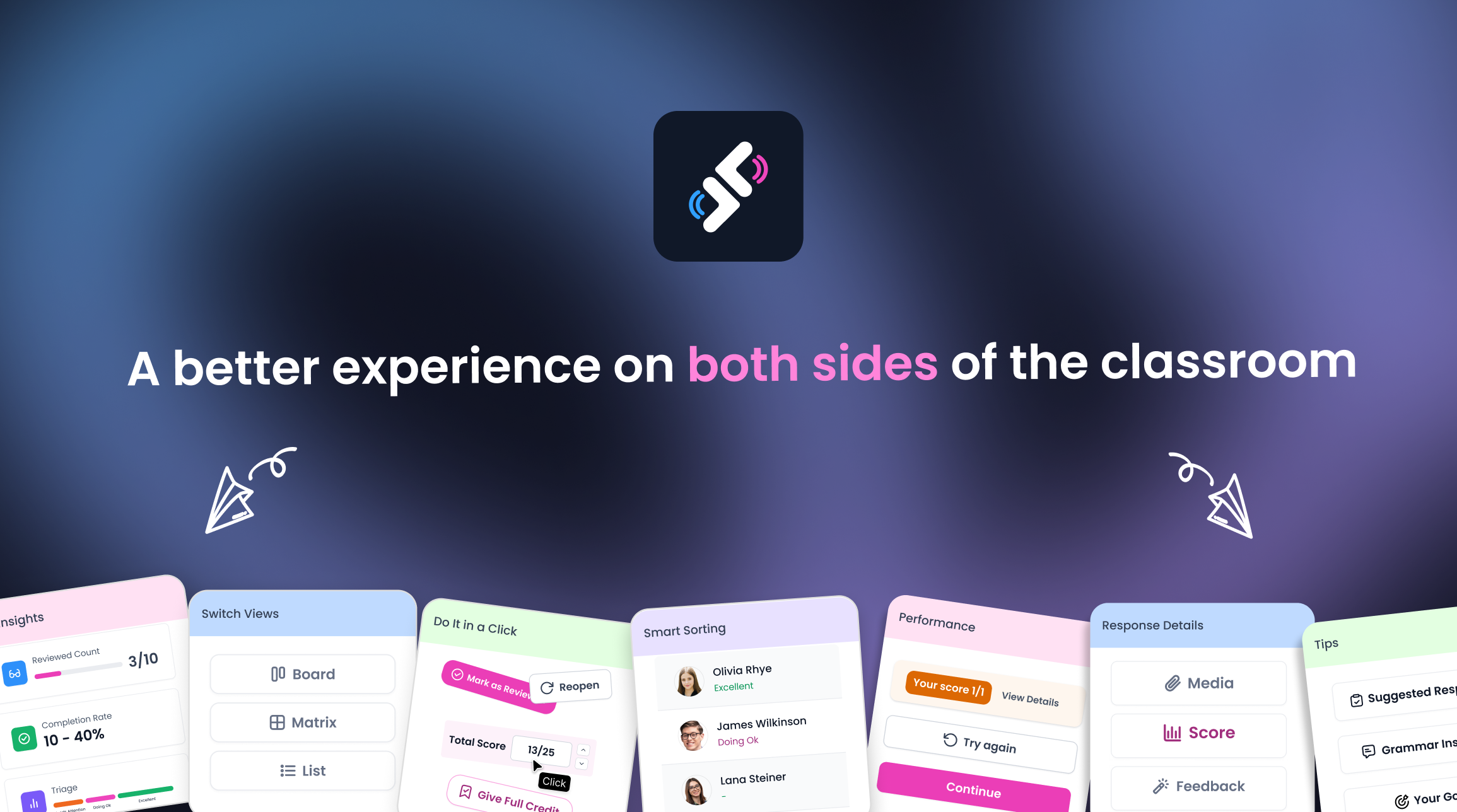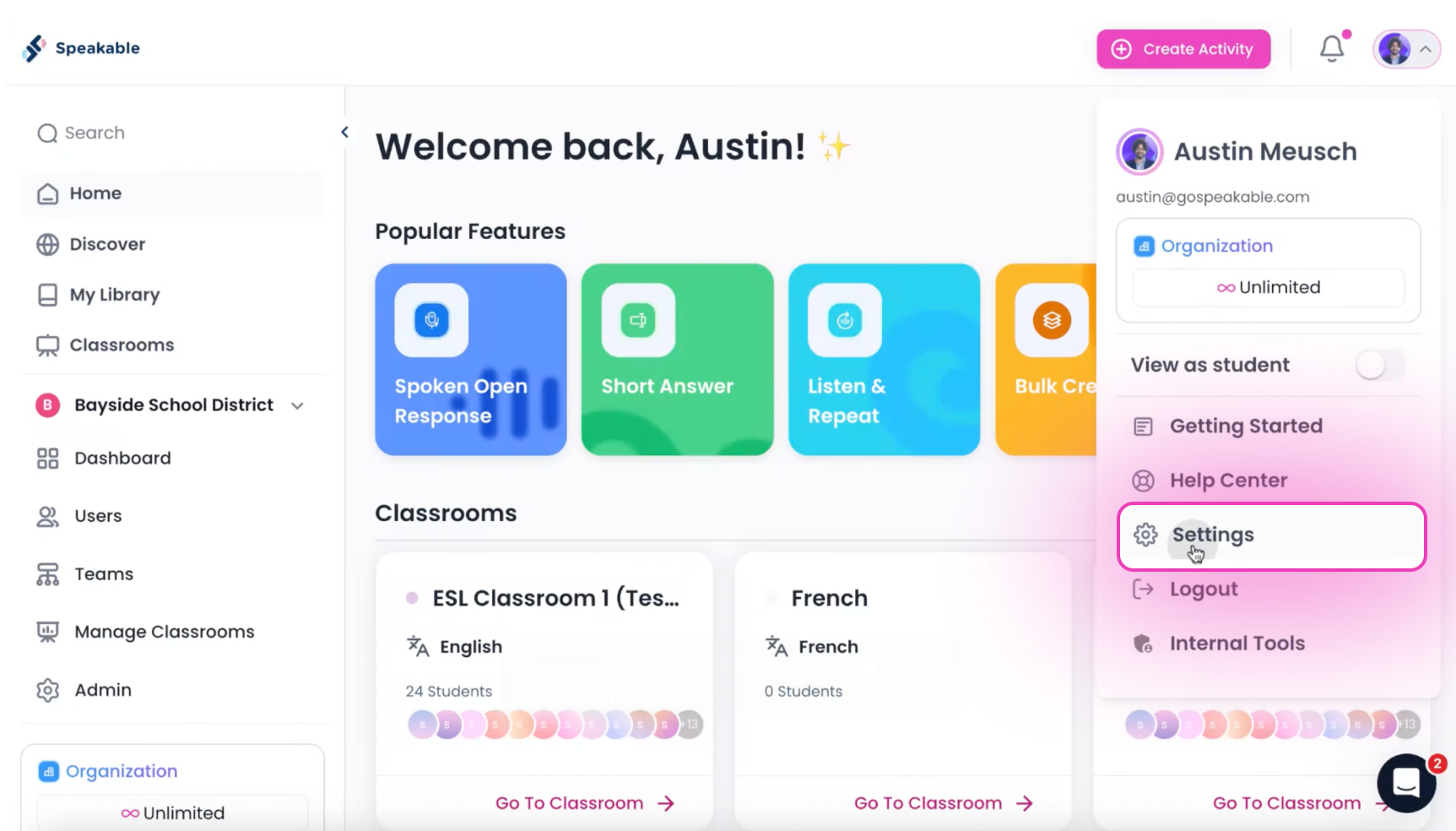
Picture this: You've just assigned a speaking activity to your class of 30 students. The next day, you log in to review their work. Where do you start? Who needs help first? Who's ready to move on? For most teachers, answering these questions meant listening to dozens of recordings, one by one, taking notes, and mentally triaging students.
We’ve completely redesigned both the student assignment experience and the teacher results view to solve this problem and many others. The result is an interface that feels more like a conversation and gives teachers instant clarity on who needs support.
Ready to try it? Enable the beta in your Settings → Beta Features, or click the banner on your dashboard.
The challenge: The old assignment interface felt like taking a test. Students couldn’t see their previous attempts, feedback appeared disconnected, and when they got stuck, they had nowhere to turn.
The solution: Assignments now flow like natural conversations.
As Ruth, a Spanish teacher, put it: “The new student interface feels clearer, simpler, and better organized.”
%2011.29.44%E2%80%AFa.m..png)
We’ve upgraded our core speech technology for more accurate, more supportive feedback.
What’s improved:
.png)
Teachers need reliable assessment tools. Students deserve a fair, transparent experience. With the new Assessment Mode, you get both.
Key controls:
.png)
The problem: Adding simple visuals took too many steps.
The solution: Add what you need, where you need it.
Sometimes, students need feedback without a score.
You’ll soon be able to turn off autograding while keeping AI feedback active. Students still receive grammar insights, proficiency estimates, and improvement tips, without the pressure of a grade. Perfect for practice or formative activities.
AI context is now separate from your media, giving you more flexibility and control.
What’s new:
If you use a reading passage or listening clip, you can now update it once, apply it everywhere, and save it for next semester, no rebuilding required.
The challenge: “I have 30 students, I can’t listen to every recording before knowing who needs my attention.”
Ruth summed it up: “Now I can see who needs help, who’s doing okay, and who’s excelling without listening to every dialogue.”
How it works:
When students submit work, the system automatically categorizes them:
You start with students who need help most, saving time while staying personal.
Think of results as your grading command center. Whether you prefer a big-picture overview or detailed feedback, you can switch views instantly.
Michael, another teacher, said: “Matrix View lets me see student input quickly and adjust scores instantly; it’s extremely useful.”
Ruth added: “You can now adjust each card’s grade easily with arrows; it’s much faster.”
Leave comments directly on student work and see the full conversation history in one place. Every exchange stays attached to the assignment, giving you and your students a clear record of progress.
.png)
For years, teachers have told us:
We listened. Language learning should feel like a back‑and‑forth, not an exam. Good assessment should make teaching clearer, not more complicated. And when a student struggles, you should spot it right away and not after listening to 30 recordings.
That’s exactly what this update was made to do.
To enable the beta:
1. Go to Settings → Beta Features, or find the banner on the dashboard

2. Toggle on New Assignment and Results Experience

3. Create a new assignment to see it in action
Have feedback? We’d love to hear it. The beta is your chance to shape the final release before November 15. Share your thoughts via chat or email us at hello@speakableapp.com
We can’t wait to hear what you think.